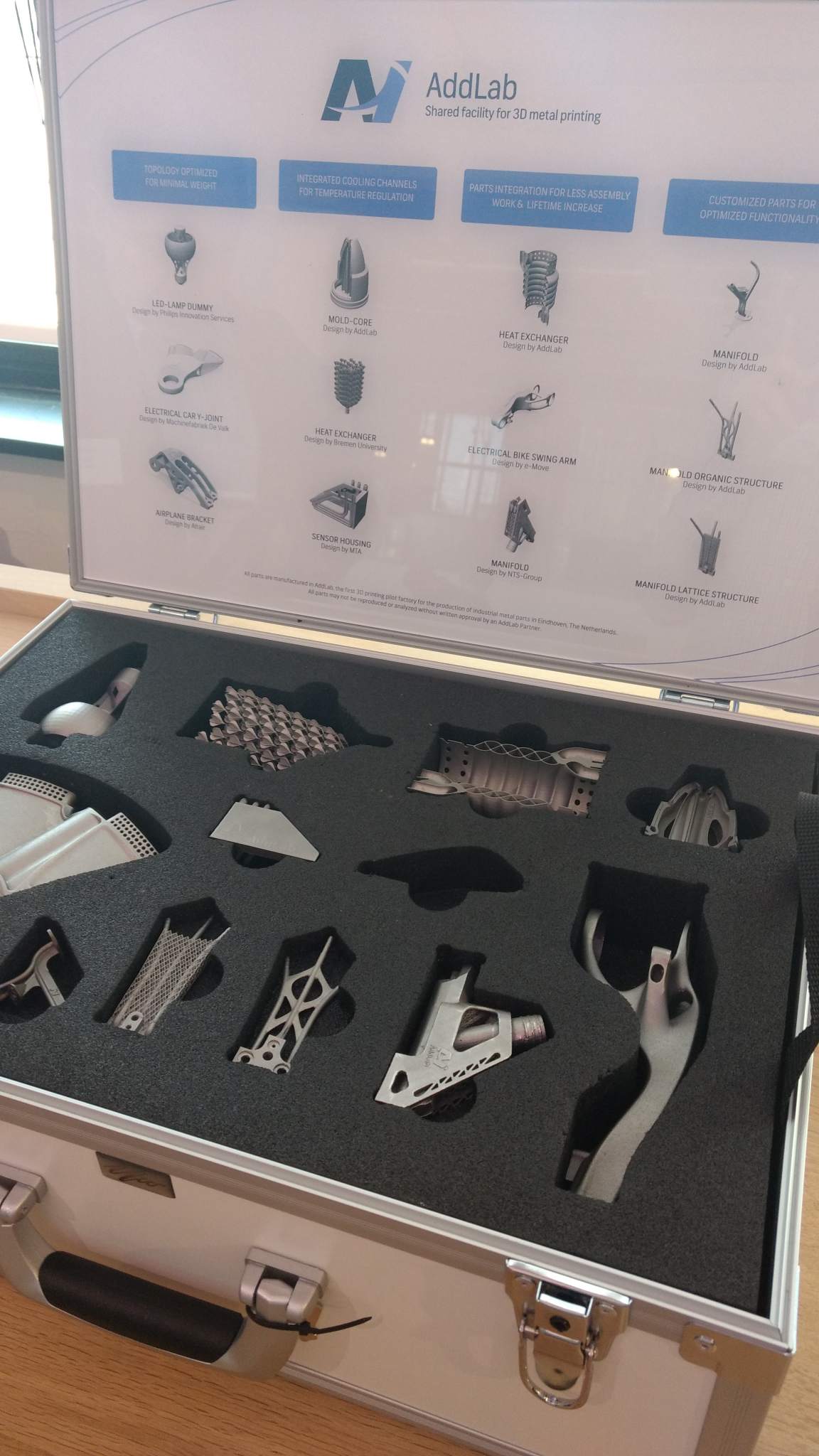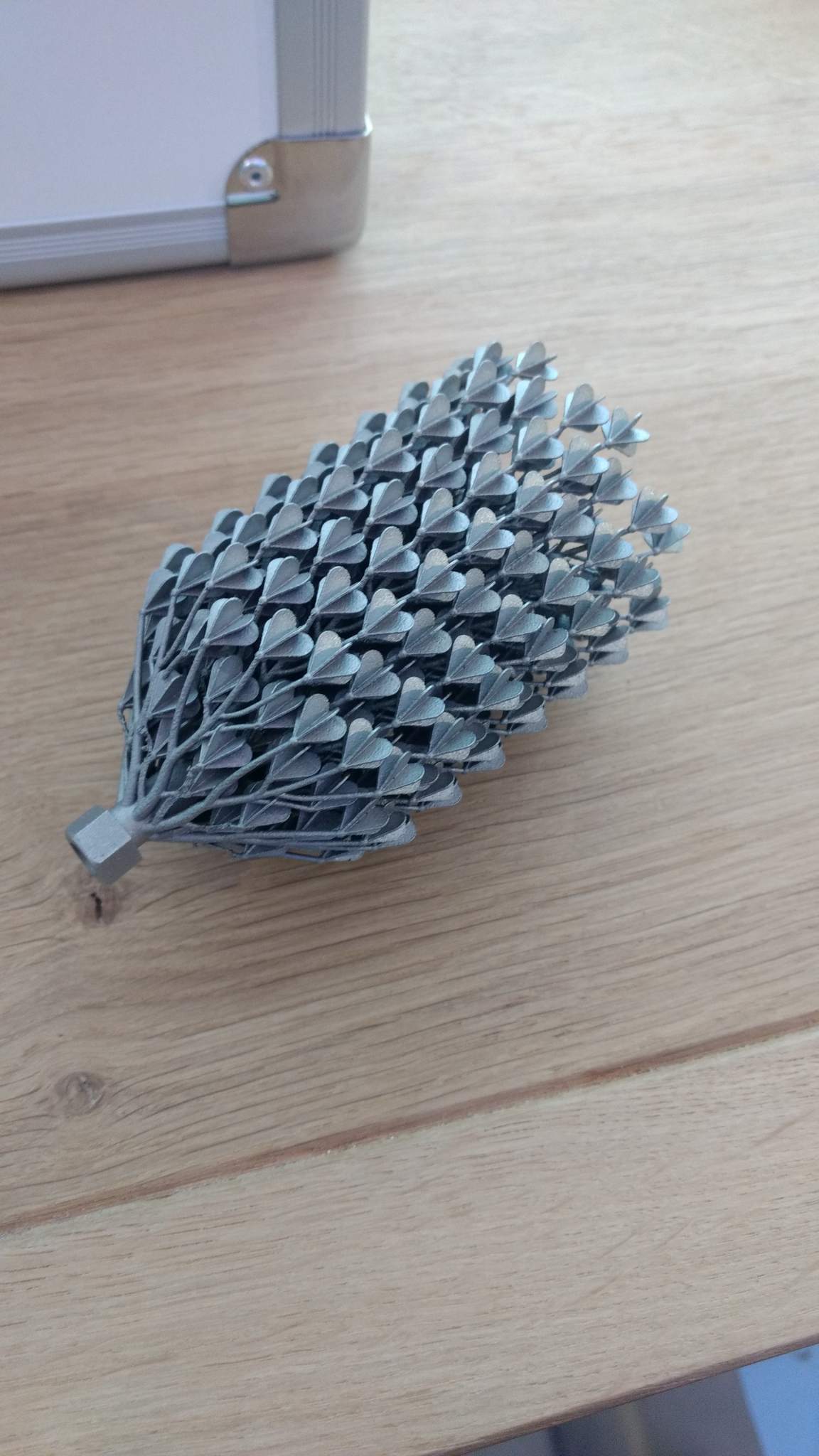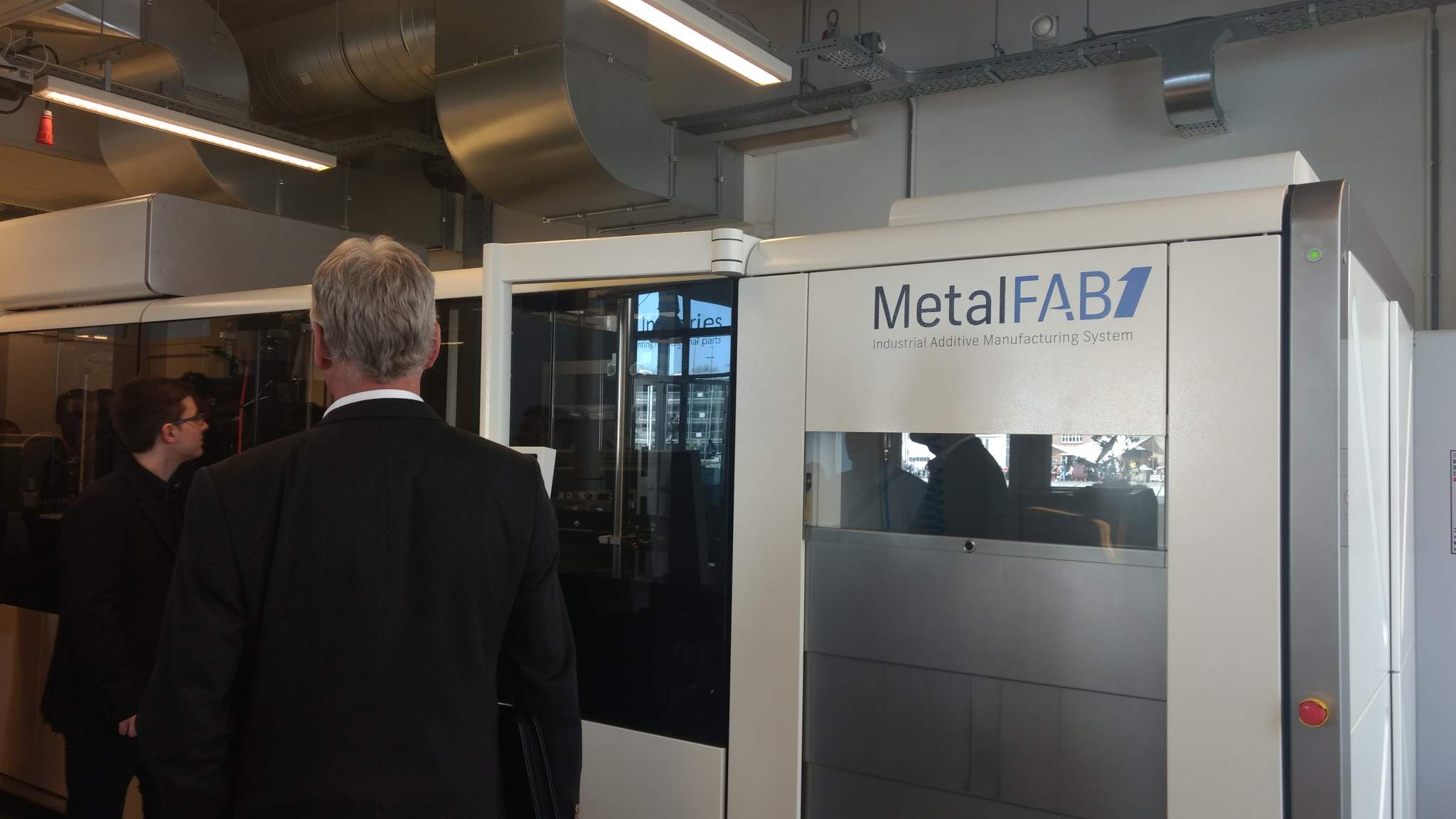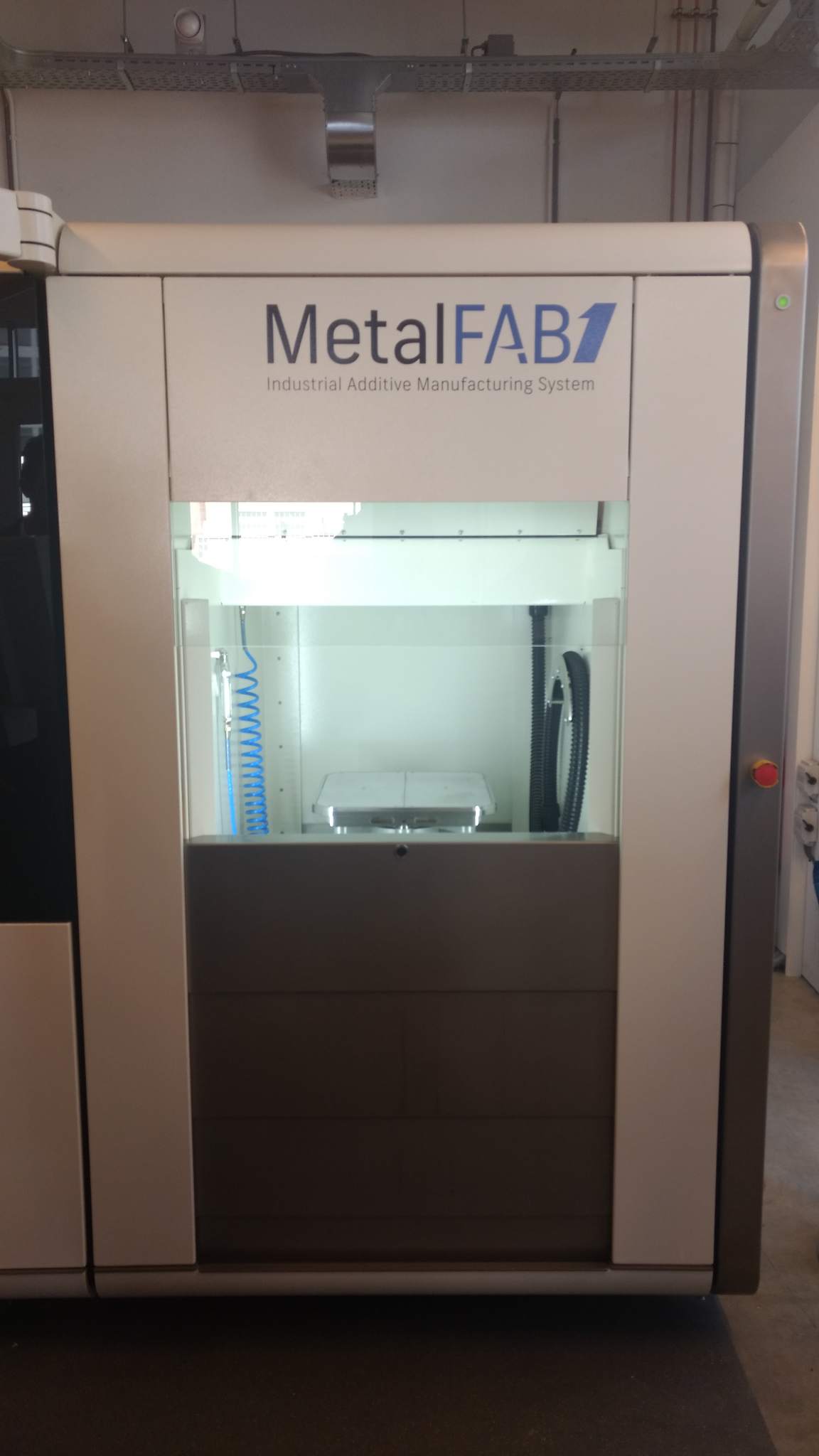Additive Industries has invited us inside their headquarters in Eindhoven this week as part of the Additive World conference.
To conclude the two-day conference they allowed attendees to get a first-hand look at the huge machine as it printed parts in one of its two powder bed build chambers.

The day also featured further talks from the company specifically about the machine’s operations and uses.
Mark Vaes, CTO of Additive Industries, spoke about the MetalFAB1 describing the printer as a,
Fully automated system that can run for prolonged periods without an operator.
The MetalFAB1 is a modular device which means its components can be expanded. With a minimum of three modules, plus the exposure component, the device can be expanded to have up to eleven.

CEO and co-founder of Additive Industries, Daan A.J. Kersten gave me a tour of the machine itself and set out to explain its use. He explained that many of their customers opt for the larger version, with an average of six modules, as it gives them more flexibility to use two materials at once.
By having two AM cores, the two modules can operate with different materials without risk of contamination.

Standard configuration
The basic modules of the device are the control module on the left, then the AM core and finally the exchange module. The control module houses the laser, the AM core deals with 3D printing and the exchange module is for unloading the printed parts.

Expansion
In addition to these modules, the MetalFAB1 can be expanded with a further AM core and with heat treatment modules and a storage module. The storage module allows for continuous use by storing build plates, both unused and those complete with built parts.
With this machine, Additive Industries hope to provide the 3D printing answer to series production. They also aim to provide a controlled approach which is something David Wimpenny, of the MTC, believes is crucial for the industry.
Voting is now open for 3D Printing Industry Awards.
For the latest on 3D printing news, follow us on twitter and sign up to our newsletter.
Featured image shows the MetalFAB1 machine at Additive Industries HQ. Photo by Corey Clarke.



